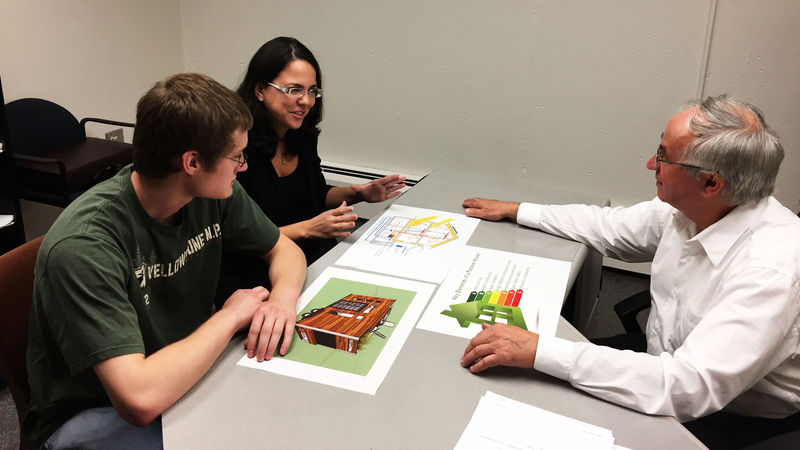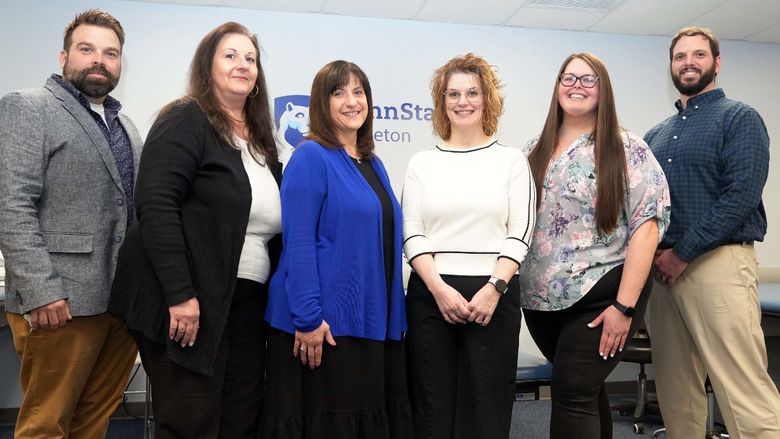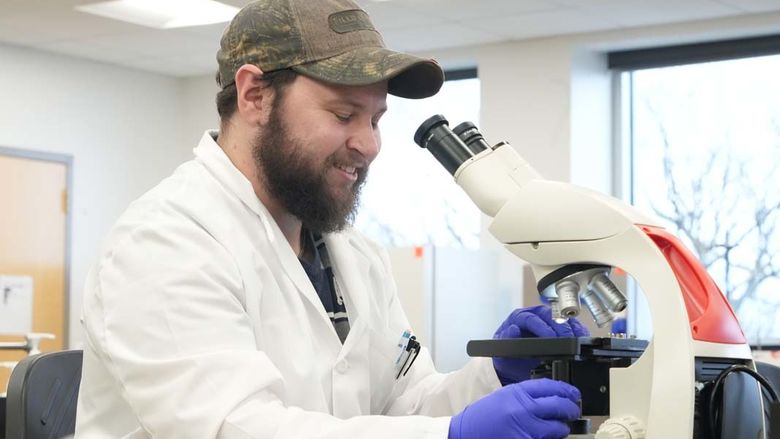

This dialog contains the full navigation menu for this site.

A summer workshop on sustainable energy has led to the development of a research project for two Penn State Hazleton students and their professor.
Raiana Nichols and Aleksander Everett attended the Energypath 2016 conference held at University Park with Dr. Wieslaw (Wes) Grebski, associate professor of engineering and Penn State Hazleton engineering degree program coordinator. Both students are juniors majoring in general engineering with a focus on alternative energy and power generation and received scholarships that fully funded the cost of the program, including meals and lodging.
The weeklong session, sponsored by the Sustainable Energy Fund, was attended by students, professors and professionals in the field, featuring keynote speaker Jack Uldrich, a renowned global futurist and the bestselling author of 11 books. He is a frequent guest on national media and regularly appears on the Science Channel’s television program “FutureScape” and the Discovery Channel show “Inside Out.” The intensive experience included three full days of classes (called “camps”), followed by two days of a conference that featured presentations from leaders in the sustainability field along with workshops that corresponded to topics the students had studied earlier in the week, exposing them to a variety of topics and information in the energy field.
It was during one of the “camps” that the students learned more about the concept of passive houses, homes that are powered by renewable energy using solar installation and other materials. Design for the homes is guided by a rigorous standard for energy efficiency in a building that considers all factors, including heat emissions from appliances and occupants. The result is a house that remains at comfortable and consistent temperatures all year long.
“The workshop really helped us by giving us guidance and the opportunity to talk to people who know about building science, which is an area we don’t have much background in,” Nichols said.
They met a variety of people from all over the globe at the conference, including Katrin Klingenberg, co-founder and executive director of the Passive House Institute US, who designed and built the first home built in the United States to the Passive House standard in 2003.
“It was a highlight for me to talk to someone so influential,” Everett said. “Now we have a set of ideas and guidelines we can follow as we go forward. The more people you learn from, the better,” he said.
Grebski described the experience as an intensive, high-level program with even registered architects participating. “Everything focuses on energy and energy sustainability. It’s a great conference for students because the people attending have the same concern for the environment. Raiana and Aleksander were very active participants and stayed on top of everything, even though the material was very advanced. They learned a lot, especially about heat transfer and calculations related to thermodynamics, which will be valuable to their research project,” he said.
“The students made great connections for themselves and our program. We created a lot of positive energy flowing from the country, including a number of people who volunteered their help,” Grebski said.
He reported that after the conference, Klingenberg told him, “Your students are awesome. After they graduate, I would like to hire them.”
“She was basically asking me, ‘Where did you find students like that?’ because they were really outshining everybody. I was very proud of them and their performance at the conference,” he said.
At the conference in University Park, they met a professor from Coppin State University in Baltimore who has done “amazing research,” according to Nichols, on the topic of using dye from pomegranates to generate solar energy. As a result, Everett was one of the students who gave an oral presentation during the Gilbert Ogonji Science Symposium “Science, Technology and Innovation: A Sustainable Future in a Global Society” at Coppin State University in Baltimore in September, and Nichols attended the Solar Power International conference in Las Vegas.
For Nichols, attending the Energypath conference – her first in the United States – and sharing her passion for sustainability with so many others was exciting.
“This conference was amazing. I learned so much and I never could have imagined how big this could be. From the first speech to the workshops, it was obvious everyone cares for the environment,” she said, expressing her desire that developing countries such as her native Brazil will be able to benefit from research and ideas used in the United States and other countries.
The students want to take the concept of the passive house and design a zero-utility mobile home, with Grebski exploring options for how the home could be constructed based on the students’ design.
“For a long time, I’ve been concerned about the fact that housing is unaffordable for many people in this country. Rents are skyrocketing and housing prices are increasing based on inflation. I’m doing this because I know so many people who are struggling. I want to work for a nonprofit and try to see that some of the inequality in the world is reduced. I think that in my lifetime, fossil fuels will become so expensive that we can’t afford to rely on them. Alternative energy is going to be especially important for low-income people who will be affected most by rising energy prices,” Everett said.
Nichols said, “We are studying a sector in which we can make the difference. So many people can’t afford to pay for electricity, but when it gets cold, people still need heat.”
Everett shared a Charles Dickens quote printed in this year’s Penn State Hazleton student planner that he said really speaks to him: “No one is useless in this world who lightens the burdens of another.”
Advised by Grebski, the students will continue the research into designing a passive house throughout their junior year and possibly into their senior year as their senior capstone project.
Both students cited the alternative energy and power generation engineering program and Grebski as major reasons they chose to attend Penn State Hazleton.
After moving to Pennsylvania from Brazil, where she earned a degree in physics, Nichols sought out a school that offered a degree specializing in alternative energy and found what she was looking for at Penn State Hazleton.
“I chose the program because this is the type of engineering I want to work in. I want to make a difference by working with clean energy and renewable energy,” she said. “I tell Dr. Grebski he’s part of the reason I am in this program. Colleges in Brazil are much bigger and the one-on-one interaction at Penn State Hazleton makes a big, big difference. Dr. Grebski is really excited about our project and we know we can count on him for anything.”
Everett, who had attended but left college previously, decided on the general engineering with a focus in alternative energy and power generation program at Penn State Hazleton after having his interest sparked by building a solar panel from a kit, followed up by a discussion with Grebski that led to him enrolling just a few weeks later.
“I can’t say enough good things about him. I really respect him and what he has done in his life,” said Everett, who commutes from Palmerton. “We might run into some issues with our project, but we’ll find our way through with his help.”
Nichols added, “Having him by our side is comforting. He’s so positive and believes in what we’re doing.”
Grebski said, “It’s great to see these young people excited about engineering and their project. He shared a quote from William Butler Yeats: “Education is not the filling of a pail, but the lighting of a fire,” adding, “If you manage to light the fire, the bucket will fill up.”


